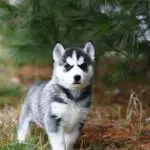Dogs of war
Battlefield Dogs
Not much is written about the heroics of early war dogs. Even today’s modern canine soldier is practically invisible to all but those who work with them side by side in the trenches. But war dogs have a colorful and courageous history stretching all the way back to ancient Egypt. Dogs were deployed for service by ancient Britannia, France, Spain, Normandy, Russia and some Asian societies. But it was the Roman legions who are best known for utilizing the full force of their canine soldiers.
BreedsEarly Egyptians used a Molassian dog. Romans were fond of the mastiff and a breed called the Talbot, an ancestor of today’s bloodhound. Attila the Hun used a giant Molosser dogs in his campaign. The Irish used Irish Wolfhounds to strip the enemy soldiers off their horses and kill them. In more recent times, the German Shepherd, Lab, Doberman Pincher and Bouvier de Flandres are chosen for their size, intelligence and strength. Modern armies also used mixed breed dogs.
ArmorOften war dogs would be fitted with spiked collars to protect their necks from attacks by enemy war dogs. The Romans designed special armor for their legions of war dogs. Some of the armor was more advanced than even the human foot soldiers’ armor. Today’s war dogs don’t perform “hand-to-paw” combat like the war dogs of ancient times. So there is less need for body armor.
Ancient HistoryIn ancient times, war dogs performed their duties skillfully. In combat, dogs were armored and sent in for direct close-quarters battle. They were specifically trained to bite extremely hard, exerting as much as 1,500 pounds of pressure per square inch: enough to pulverize human bones.
Canine soldiers were also trained to cut off reinforcements, to track and kill retreating soldiers, and to fight other dogs. In fact, in 1476, a regiment of Swiss battle dogs annihilated an entire formation of canine soldiers from Burgundy.
As sentries, dogs were trained to guard troops, supplies, livestock, and prisoners. Some were trained so well that a prisoner was not bound or held by any means: if he made an attempt to escape, he was ferociously put down by his canine guard.
Ancient war dogs were also trained to track and scout. These specialized dogs were actually able to track and report on enemy positions and concentrations. They also hunted retreating enemies and soldiers that had deserted.
Modern Day SoldiersToday’s war dog is used more to aid allied soldiers than to engage and attack the enemy. This change is primarily due to the change in warfare tactics. Long range missiles have replace swords and arrows.
Delivering messages is a vital role for modern war dogs. Modern dogs of war have saved thousands of lives by serving as messengers. In the Vietnam war alone, it is estimated that the 4,000 dogs that served saved as many as 10,000 American lives. These dogs delivered messages to reserve troops, mortar batteries, and battle headquarters through heavy enemy fire. One U.S. canine soldier was reportedly shot nine times during a mission, but nevertheless still delivered his message, collapsing into death immediately after his job was done.
As medics, strong dogs are trained to bring medicine and comfort to wounded and dying soldiers in the field. Some of these dogs are even provided with “suicide” medication for soldiers who are badly wounded and will likely die or be captured. Others are trained to do nothing more than sit by the side of a dying soldier. Exceptional dogs are trained to pull wounded soldiers to safety.
Some of the larger, stronger breeds are trained as draught dogs. Mastiffs, Rottweilers, Irish Wolfhounds, and other very large breeds have been used to haul machine guns, litters, mortars, and other supplies.
Sadly, some modern war dogs are trained to execute kamikaze missions. In WWII, Russians strapped dogs with explosives and sent them out to explode underneath German tanks. Today, Israeli forces have been known to outfit Rottweilers with explosives and send them into enemy positions to detonate.
With their heightened sense of smell, today’s most advanced military dogs are specially trained to detect mines, traps, IED’s, and other types of explosives. They also are used to detect and uncover weapons caches.
Though they gladly give their lives in defense and protection of their human counterparts, there is, as yet, no permanent memorial to these amazing war dogs. They have become so integrated into our military that they have been given officer rank, been knighted, and awarded medals. Their courage and loyalty should never be forgotten.


